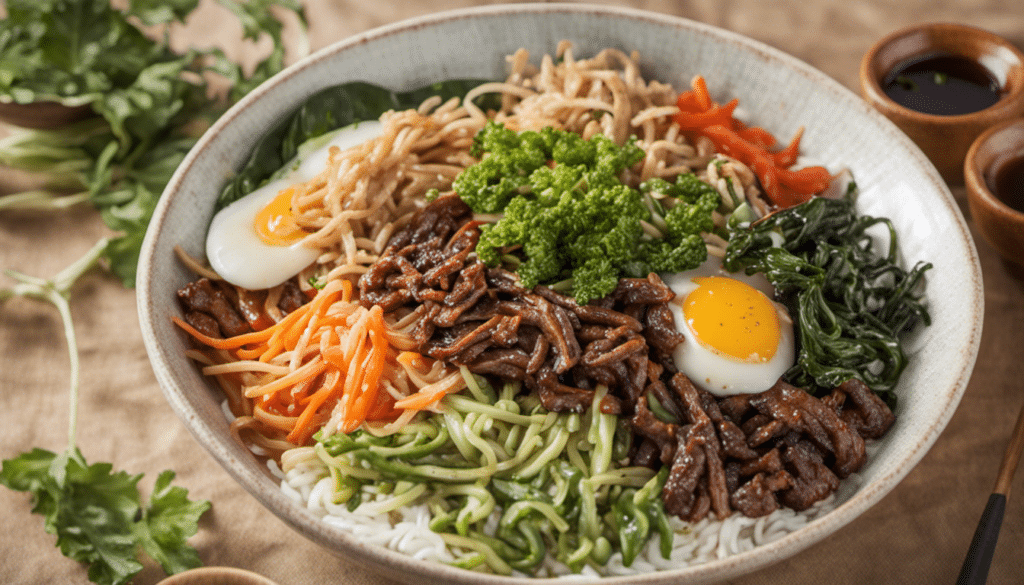| Prep: 20 mins | Cook: 45 mins | Difficulty: Medium | Serves: 6 |
| kcal | fat | saturates | carbs |
| 355 | 8.8g | 6g | 60g |
| sugars | fibre | protein | salt |
| 10g | 3g | 8.5g | 0.79g |
There’s something special to me about good old-fashioned family recipes. Case in point: the Fermented Cassava Bread. The mere mention of it takes me back to my roots, reminding me of priceless family gathered moments shared over a homemade meal. As an Italian-American, pasta and meatball have often been my go-to; but this seldom-known gem is a well-loved heirloom in my repertoire, inspired by global flavors and imbued with fond memories alike.
The Tasteful Tapestry of My Family’s Cuisine
When I was a child, my Italian grandparents would often talk about their culinary experiences. They had a wonderful knack for infusing Italian flavors into every dish they made. Fast forward a few decades and those traditional meals still inspire my cooking. This Fermented Cassava Bread is an homage to my grandparents, taking roots (literally) from their Italian culinary influences while embracing the global flavors of cassava. Cassava, a starchy, nutty-flavored tuber, central to many African, South American and Asian cuisines, does a brilliant job in this bread recipe, lending it a unique flavor profile that’s simply unforgettable.
Health Benefits of Fermented Cassava Bread
This recipe isn’t just delicious, it’s actually very healthy too. Fermented cassava enables the release of its beneficial probiotics, aiding digestion and enhancing gut health. It’s also rich in essential minerals like potassium and calcium. Plus, this bread includes coconut oil, known for its healthy fats and dried fruits that offer a burst of antioxidants and sweetness! Undoubtedly, this bread is a great partner to my active lifestyle, whether it’s a pre-hike snack or a rewarding treat after a long day outside with my grandkids.
Using fermented cassava, this bread plugs right into the healthier side of life, reminiscent of the open-air, freely fermented bread that you might find in a traditional African cooking hut or a home in Brazil. It’s similar in a way, to sourdough, with its fermented base and satisfying-every-time texture. Don’t be deterred by its eccentricity; pair it with some hearty Italian soup, maybe a minestrone or a zuppa toscana, and you’ve got yourself a globally-inspired, wholesome meal.
Here’s the image signature of what you can expect from your homemade Fermented Cassava Bread – a genuinely appetizing sight to behold!
So, give this recipe a shot and let your taste buds go places. You are in for a unique, heartfelt experience that reaches beyond borders and right into your kitchen. From my family table to yours, happy cooking!
What You’ll Need
- 2 cups of fermented cassava (Manioc)
- 1 cup of warm water
- 1 tablespoon of white sugar
- 2 1/4 teaspoons of active dry yeast
- 3 and 1/2 cups of all-purpose flour
- 2 teaspoons of salt
- 1 cup of mixed dried fruit (raisins, cranberries, apricots)
- 1/4 cup of coconut oil
- 2 large eggs
Method
Step One
First, dissolve the tablespoon of sugar in the warm water. Sprinkle the yeast on top and let it sit for around 10 minutes or until it froths up. This shows that the yeast is now activated.
Step Two
In a large bowl, combine the fermented cassava, all-purpose flour and salt. Stir these ingredients together.
Step Three
Melt your coconut oil if it isn’t already in a liquid state. Then, in another bowl, beat your eggs and mix these in with the coconut oil.
Step Four
Now it’s time to combine all ingredients. Pour the egg and oil mixture into the cassava and flour blend. Then, add your yeasty water. Mix this all together until a sticky dough forms.
Step Five
Add the mixed dried fruit into your dough, using your hands or a spoon to make sure it’s evenly distributed throughout.
Step Six
Once your dough has come together, transfer it to a floured work surface and knead it for about 10 minutes. You know it’s done when your dough is soft, elastic and a little bit tacky to touch.
Step Seven
Place the dough in a greased bowl and cover it with a clean towel. Leave it somewhere warm for around 2 hours, or until it doubles in size. This is an important step, as the yeast must ferment the dough further before it bakes.
Step Eight
Preheat your oven to 375°F (190°C). Once your dough has risen, transfer it into a greased loaf tin. Bake for around 40 minutes or until the top is golden and the bread sounds hollow when tapped.
Step Nine
Allow your bread to cool in the tin for 10 minutes, then transfer it to a wire rack to cool down completely. Slice it up and enjoy your homemade fermented cassava bread.




